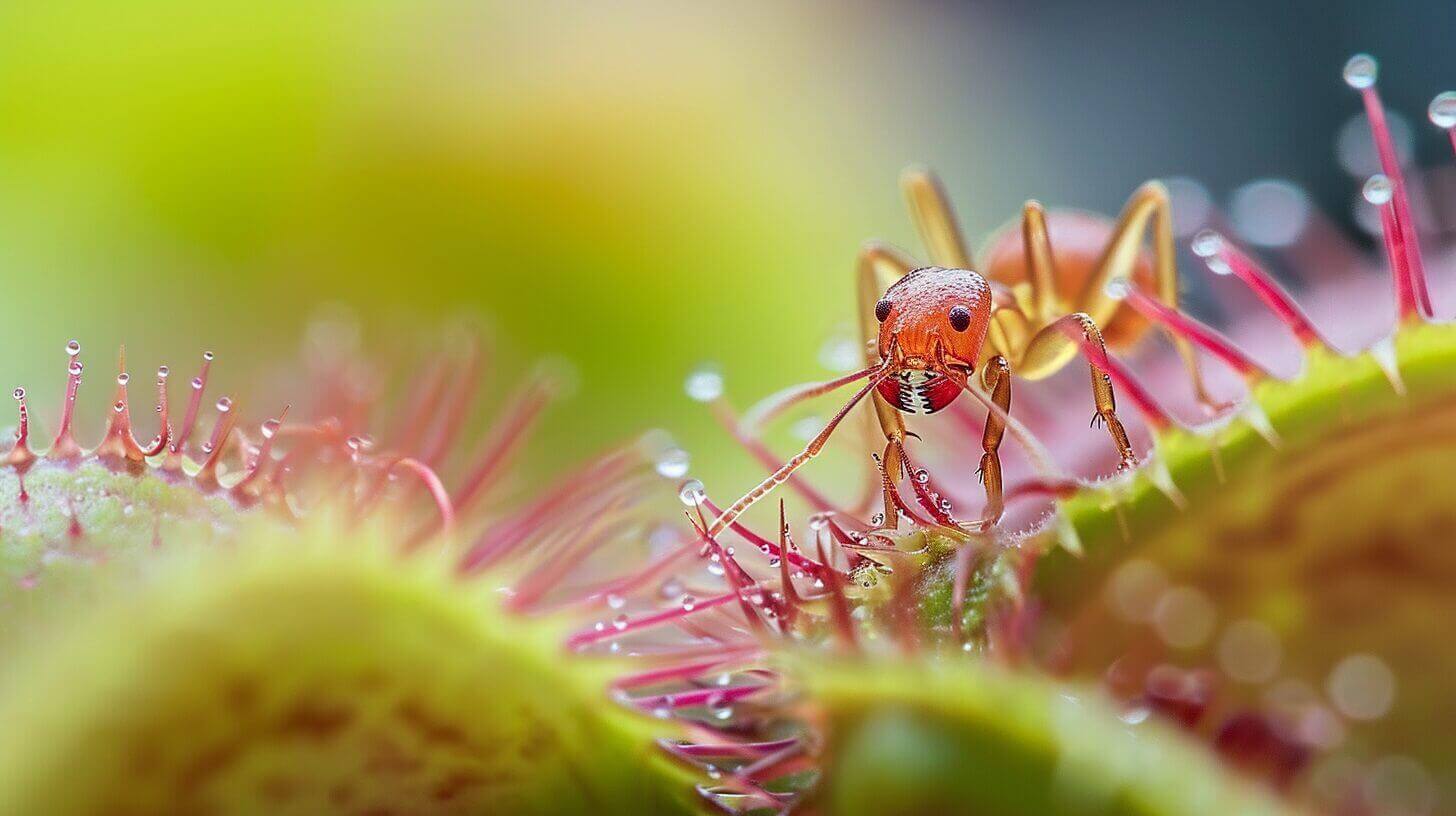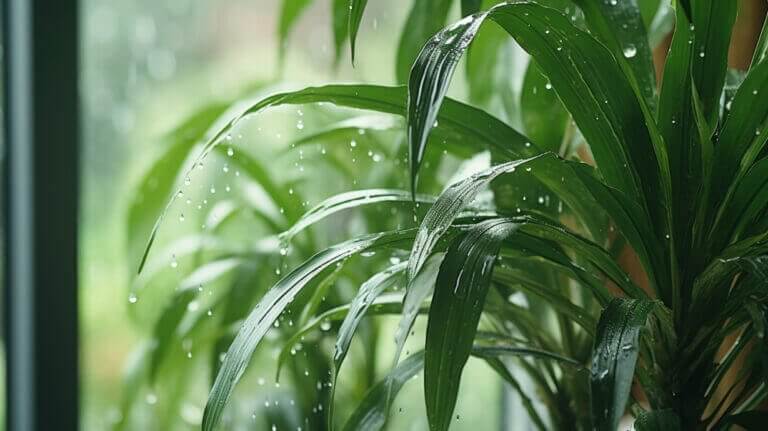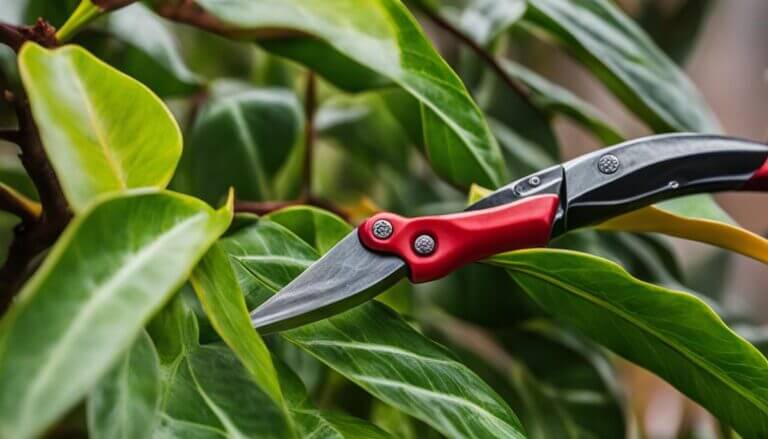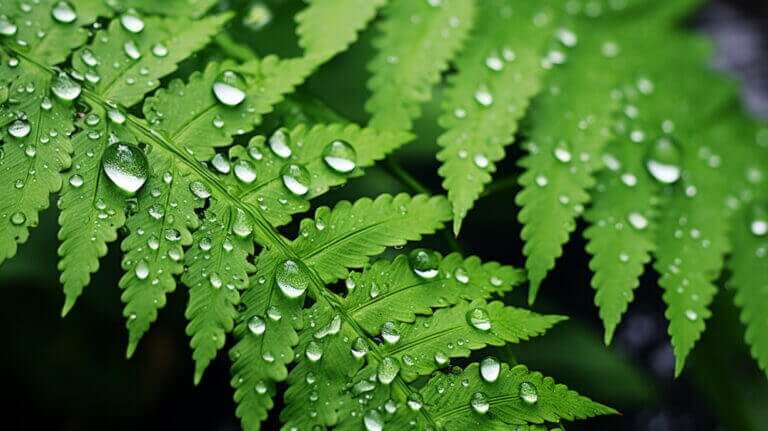Venus Flytrap Carnivorous Plant: Venus Flytraps Trapping And Digestion Mechanism Explained
The Venus flytrap (Dionaea muscipula) is a fascinating carnivorous plant with a unique system for trapping and digesting its prey. Unlike animals, the Venus flytraps doesn’t consume its prey for energy. Instead, it extracts essential nutrients from them, particularly nitrogen and phosphorus, which are scarce in its acidic habitat.
The trapping mechanism of the Venus flytrap is truly remarkable. It begins by luring prey with sweet-smelling nectar. Once the unsuspecting prey lands on the leaf, trigger hairs on the surface cause the trap to snap shut instantly. The prey becomes trapped behind interlocking teeth on the leaf edges.
Inside the closed trap, the Venus flytrap’s leaf secretes fluids from its digestive glands. These fluids dissolve the prey, kill bacteria and fungi, and break down the insect with enzymes. The nutrients are then absorbed into the leaf, while the leftover exoskeleton is released after five to 12 days.
Key Takeaways:
- The Venus flytrap is a carnivorous plant that extracts essential nutrients from its prey.
- The trapping mechanism involves luring prey with sweet-smelling nectar and trapping them behind interlocking teeth on the leaf edges.
- Trigger hairs on the leaf surface cause the trap to snap shut instantly when touched by the prey or stimulated by insect secretions.
- Inside the closed trap, the Venus flytrap’s digestive glands secrete fluids that dissolve the prey, kill bacteria and fungi, and break down the insect with enzymes.
- The nutrients are then absorbed into the leaf, and the leftover exoskeleton is released after five to 12 days.
Trapping Mechanism of the Venus Flytrap
The Venus flytrap utilizes a fascinating trapping mechanism to capture its prey. This carnivorous plant entices insects with sweet-smelling nectar secreted on its specialized leaf. When unsuspecting prey land on the leaf and come in contact with the trigger hairs, the trap swiftly snaps shut. The interlocking teeth on the leaf edges effectively trap the prey, preventing escape.
The trigger hairs play a crucial role in activating the trap closure. If a hair is touched twice or two hairs are touched within a 20-second interval, the leaf’s outer surface cells rapidly expand, further clamping down on the prey. Additionally, the trap can form an airtight seal if insect secretions, such as uric acid, stimulate it. This ensures that the trapped prey remains confined within the leaf structure.
Once the trap is closed, the Venus flytrap’s digestive glands, located along the interior edge of the leaf, go to work. These glands secrete fluids that facilitate prey dissolution. The fluids contain enzymes that break down the soft tissues of the prey, eliminating any bacteria or fungi present. The digestive glands play a vital role in extracting essential nutrients from the dissolved prey, allowing the Venus flytrap to thrive in its nutrient-poor habitat.
Digestion Process of the Venus Flytrap
The digestion process of the Venus flytrap is a fascinating and unique phenomenon. Once the prey becomes trapped, a series of intricate mechanisms come into play within the closed trap to break down and absorb nutrients from the captured insect.
First, the digestive glands inside the leaf secrete fluids that create an acidic environment, typically with a pH of 2-3. This highly acidic condition aids in the digestion process, resembling the environment of animal digestive systems, such as the parietal cells of the stomach.
The digestive fluids of the Venus flytrap contain a variety of enzymes that work together to break down the proteins, chitin, nucleic acids, and other compounds present in the prey. Enzymes like proteases, chitinases, ribonucleases, amylases, esterases, and phosphatases play crucial roles in the breakdown of these high-molecular-weight substances.
As the prey is dissolved, the essential nutrients are extracted and absorbed by the glands through membrane transport proteins or endocytosis. This nutrient absorption process allows the Venus flytrap to obtain vital elements like nitrogen and phosphorus from its prey, which are scarce in its acidic habitat. By maintaining a highly acidic environment and utilizing a diverse array of digestive enzymes, the Venus flytrap demonstrates its remarkable adaptation for efficient prey breakdown and nutrient absorption.
FAQ
How does the Venus flytrap’s trapping mechanism work?
The Venus flytrap’s trapping mechanism involves modified leaves, or lobes, that snap shut when an insect or spider stimulates the tiny hairs on the plant’s surface. This stimulation triggers an action potential, causing the trap to close.
What happens after the Venus flytrap’s trap closes?
After the trap closes, the Venus flytrap begins the digestion process. The plant secretes digestive enzymes from glands in the lobe, which break down the prey into nutrients the plant can absorb.
What is the role of digestive enzymes in carnivorous plants?
Digestive enzymes in carnivorous plants, like the Venus flytrap and sundew, play a crucial role in breaking down the insect prey into nutrients. These enzymes are secreted by the plant’s glands and can digest the protein composition of the insect.
How does the Venus flytrap digest its prey?
The Venus flytrap digests its prey through a combination of enzyme secretion and absorption. Once the prey is trapped, the plant secretes digestive enzymes that break down the insect. The resulting nutrients are then absorbed by the plant.
Can carnivorous plants perform photosynthesis?
Yes, despite their carnivory, carnivorous plants like the Venus flytrap can perform photosynthesis. They resort to digesting insects and small animals to supplement their nutrient intake in nutrient-poor environments.
How do carnivorous plants capture their prey?
Carnivorous plants have evolved various mechanisms for prey capture. For instance, the Venus flytrap uses snap traps, while the pitcher plant uses a pitfall trap, where insects fall into a deep pitcher filled with digestive fluid.
What care does a Venus flytrap require?
Caring for a Venus flytrap involves providing the right growing conditions, including plenty of sunlight, high humidity, and a suitable growing medium. It’s also important to remember that these plants don’t need to be fed insects if they’re grown outdoors, as they’ll catch their own prey.







